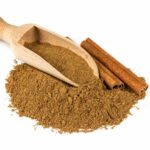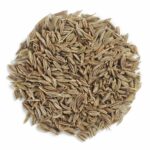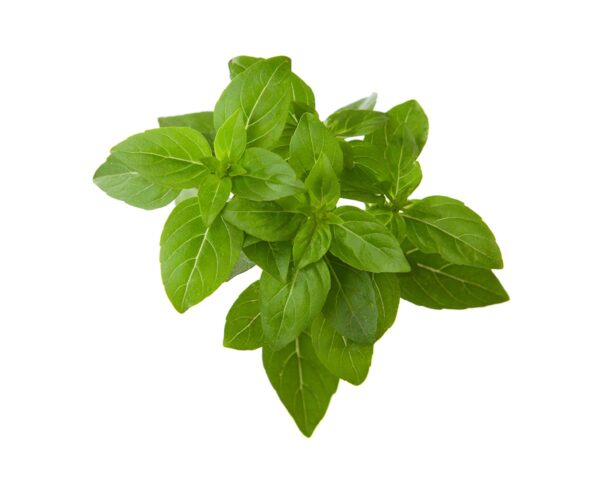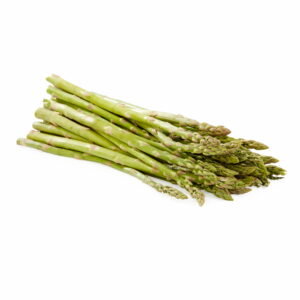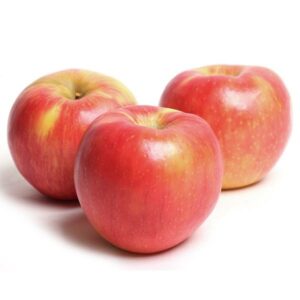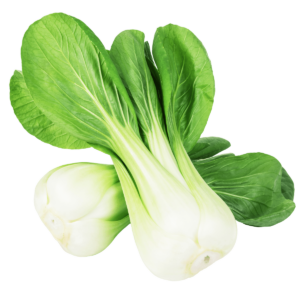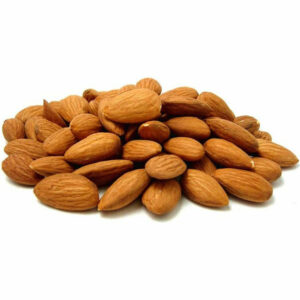Description
The round, often pointed leaves of the basil plant looks a lot like peppermint to which it is related. Its highly fragrant leaves are used as a seasoning herb for a variety of foods but has become ever popular as the main ingredient in pesto, the mixture of basil, pine nuts and parmesan cheese.
0.50 cup
(21.20 grams)
GI: very low
This chart graphically details the %DV that a serving of Basil provides for each of the nutrients of which it is a good, very good, or excellent source according to our Food Rating System. Additional information about the amount of these nutrients provided by Basil can be found in the Food Rating System Chart. A link that takes you to the In-Depth Nutritional Profile for Basil, featuring information over 80 nutrients, can be found under the Food Rating System Chart.
- Health Benefits
- Description
- History
- How to Select and Store
- Tips for Preparing and Cooking
- How to Enjoy
- Nutritional Profile
- References
Health Benefits
Research studies on basil have shown unique health-protecting effects in two basic areas: basil’s flavonoids and volatile oils.
DNA Protection Plus Anti-Bacterial Properties
The unique array of active constituents called flavonoids found in basil provide protection at the cellular level. Orientin and vicenin are two water-soluble flavonoids that have been of particular interest in basil, and in studies on human white blood cells; these components of basil protect cell structures as well as chromosomes from radiation and oxygen-based damage.
In addition, basil has been shown to provide protection against unwanted bacterial growth. These anti-bacterial properties of basil are not associated with its unique flavonoids, but instead with its volatile oils, which contain estragole, linalool, cineole, eugenol, sabinene, myrcene, and limonene. Lab studies show the effectiveness of basil in restricting growth of numerous bacteria, including : Listeria monocytogenes, Staphylococcus aureus, Escherichia coli O:157:H7, Yersinia enterocolitica, and Pseudomonas aeruginosa.
Anti-Inflammatory Effects
The eugenol component of basil’s volatile oils has been the subject of extensive study, since this substance can block the activity of an enzyme in the body called cyclooxygenase (COX). Many non-steriodal over-the-counter anti-inflammatory medications (NSAIDS), including aspirin and ibuprofen, as well as the commonly used medicine acetaminophen, work by inhibiting this same enzyme. (In the case of acetaminophen, this effect is somewhat controversial, and probably occurs to a much lesser degree than is the case with aspirin and ibuprofen). This enzyme-inhibiting effect of the eugenol in basil qualifies basil as an “anti-inflammatory” food that can provide important healing benefits along with symptomatic relief for individuals with inflammatory health problems like rheumatoid arthritis or inflammatory bowel conditions.
Nutrients Essential for Cardiovascular Health
Want to enrich the taste and cardiovascular health benefits of your pasta sauce? Add a good helping of basil. Basil is a very good source of vitamin A (through its concentration of carotenoids such as beta-carotene). Called “pro-vitamin A,” since it can be converted into vitamin A, beta-carotene is a more powerful anti-oxidant than vitamin A and not only protects epithelial cells (the cells that form the lining of numerous body structures including the blood vessels) from free radical damage, but also helps prevent free radicals from oxidizing cholesterol in the blood stream. Only after it has been oxidized does cholesterol build up in blood vessel walls, initiating the development of atherosclerosis, whose end result can be a heart attack or stroke.
Free radical damage is a contributing factor in many other conditions as well, including asthma, osteoarthritis, and rheumatoid arthritis. The beta-carotene found in basil may help to lessen the progression of these conditions while protecting cells from further damage.
Basil is also a good source of magnesium, which promotes cardiovascular health by prompting muscles and blood vessels to relax, thus improving blood flow and lessening the risk of irregular heart rhythms or a spasming of the heart muscle or a blood vessel.
In addition to the health benefits and nutrients described above, basil also emerged from our food ranking system as an excellent source of vitamin K and manganese, a very good source of copper and vitamin C, and a good source of calcium, iron, folate and omega-3 fatty acids.
Description
Basil is a highly fragrant plant whose leaves are used as a seasoning herb for many different types of foods. Basil has become one of the most recognizable herbs ever since pesto, the mixture of basil, pine nuts and Parmesan cheese, has become popular.
Basil has round leaves that are oftentimes pointed. They are green in color, although some varieties feature hints of red or purple. Basil looks a little like peppermint, which is not surprising since they belong to the same plant family.
There are more than 60 varieties of basil, all of which differ somewhat in appearance and taste. While the taste of sweet basil is bright and pungent, other varieties also offer unique tastes: lemon basil, anise basil and cinnamon basil all have flavors that subtly reflect their name. The scientific name for basil is Ocimum basilicum.
History
Basil now grows in many regions throughout the world, but it was first native to India, Asia and Africa. It is prominently featured in varied cuisines throughout the world including Italian, Thai, Vietnamese and Laotian.
The name “basil” is derived from the old Greek word basilikohn, which means “royal,” reflecting that ancient culture’s attitudes towards an herb that they held to be very noble and sacred. The tradition of reverence of basil has continued in other cultures. In India, basil was cherished as an icon of hospitality, while in Italy, it was a symbol of love.
How to Select and Store
Whenever possible, choose fresh basil over the dried form of the herb since it is superior in flavor. The leaves of fresh basil should look vibrant and be deep green in color. They should be free from darks spots or yellowing.
Even through dried herbs and spices like basil are widely available in supermarkets, you may want to explore the local spice stores in your area. Oftentimes, these stores feature an expansive selection of dried herbs and spices that are of superior quality and freshness compared to those offered in regular markets. Just like with other dried herbs, when purchasing dried basil, try to select organically grown basil since this will give you more assurance that it has not been irradiated (among other potential adverse effects, irradiating basil may lead to a significant decrease in its vitamin C and carotenoid content.)
Fresh basil should be stored in the refrigerator wrapped in a slightly damp paper towel. It may also be frozen, either whole or chopped, in airtight containers. Alternatively, you can freeze the basil in ice cube trays covered with either water or stock that can be added when preparing soups or stews. Dried basil should be kept in a tightly sealed glass container in a cool, dark and dry place where it will keep fresh for about six months.
Tips for Preparing and Cooking
The Healthiest Way of Cooking With Basil
Since the oils in basil are highly volatile, it is best to add the herb near the end of the cooking process, so it will retain its maximum essence and flavor.
How to Enjoy
A Few Quick Serving Ideas:
- Combine fresh chopped basil with garlic and olive oil to make a dairy-free variety of pesto that can top a variety of dishes including pasta, salmon and whole wheat brushetta.
- Enjoy a taste of Italy by layering fresh basil leaves over tomato slices and mozzarella cheese to create this traditional colorful and delicious salad.
- Adding basil to healthy stir-fries, especially those that include eggplant, cabbage, chili peppers, tofu and cashew nuts will give them a Thai flair.
- Purée basil, olive oil and onions in a food processor or blender and add to tomato soups.
- Enjoy a warm cup of invigorating basil tea by infusing chopped basil leaves in boiling water for eight minutes.
For some of our favorite recipes, click Recipes.
Nutritional Profile
Basil is an excellent source of vitamin K and manganese; a very good source of copper, vitamin A (in the form of carotenoids such as beta-carotene), and vitamin C; and a good source of calcium, iron, folate, magnesium and omega-3 fatty acids.
Introduction to Food Rating System Chart
In order to better help you identify foods that feature a high concentration of nutrients for the calories they contain, we created a Food Rating System. This system allows us to highlight the foods that are especially rich in particular nutrients. The following chart shows the nutrients for which this food is either an excellent, very good, or good source (below the chart you will find a table that explains these qualifications). If a nutrient is not listed in the chart, it does not necessarily mean that the food doesn’t contain it. It simply means that the nutrient is not provided in a sufficient amount or concentration to meet our rating criteria. (To view this food’s in-depth nutritional profile that includes values for dozens of nutrients – not just the ones rated as excellent, very good, or good – please use the link below the chart.) To read this chart accurately, you’ll need to glance up in the top left corner where you will find the name of the food and the serving size we used to calculate the food’s nutrient composition. This serving size will tell you how much of the food you need to eat to obtain the amount of nutrients found in the chart. Now, returning to the chart itself, you can look next to the nutrient name in order to find the nutrient amount it offers, the percent Daily Value (DV%) that this amount represents, the nutrient density that we calculated for this food and nutrient, and the rating we established in our rating system. For most of our nutrient ratings, we adopted the government standards for food labeling that are found in the U.S. Food and Drug Administration’s “Reference Values for Nutrition Labeling.” Read more background information and details of our rating system.
|
Basil, chopped, fresh
0.50 cup 21.20 grams Calories: 5
GI: very low |
||||
| Nutrient | Amount | DRI/DV (%) |
Nutrient Density |
World’s Healthiest Foods Rating |
|---|---|---|---|---|
| vitamin K | 87.94 mcg | 98 | 360.4 | excellent |
| manganese | 0.24 mg | 10 | 38.5 | excellent |
| copper | 0.08 mg | 9 | 32.8 | very good |
| vitamin A | 55.91 mcg RAE | 6 | 22.9 | very good |
| vitamin C | 3.82 mg | 5 | 18.8 | very good |
| calcium | 37.52 mg | 4 | 13.8 | good |
| iron | 0.67 mg | 4 | 13.7 | good |
| folate | 14.42 mcg | 4 | 13.3 | good |
| magnesium | 13.57 mg | 3 | 11.9 | good |
| omega-3 fats | 0.07 g | 3 | 10.8 | good |
| World’s Healthiest Foods Rating |
Rule |
|---|---|
| excellent | DRI/DV>=75% OR Density>=7.6 AND DRI/DV>=10% |
| very good | DRI/DV>=50% OR Density>=3.4 AND DRI/DV>=5% |
| good | DRI/DV>=25% OR Density>=1.5 AND DRI/DV>=2.5% |
In-Depth Nutritional Profile
In addition to the nutrients highlighted in our ratings chart, here is an in-depth nutritional profile for Basil. This profile includes information on a full array of nutrients, including carbohydrates, sugar, soluble and insoluble fiber, sodium, vitamins, minerals, fatty acids, amino acids and more.
| Basil, chopped, fresh (Note: “–” indicates data unavailable) |
||
| 0.50 cup (21.20 g) |
GI: very low | |
| BASIC MACRONUTRIENTS AND CALORIES | ||
|---|---|---|
| nutrient | amount | DRI/DV (%) |
| Protein | 0.67 g | 1 |
| Carbohydrates | 0.56 g | 0 |
| Fat – total | 0.14 g | 0 |
| Dietary Fiber | 0.34 g | 1 |
| Calories | 4.88 | 0 |
| MACRONUTRIENT AND CALORIE DETAIL | ||
| nutrient | amount | DRI/DV (%) |
| Carbohydrate: | ||
| Starch | — g | |
| Total Sugars | 0.06 g | |
| Monosaccharides | 0.06 g | |
| Fructose | 0.00 g | |
| Glucose | 0.00 g | |
| Galactose | 0.06 g | |
| Disaccharides | 0.00 g | |
| Lactose | 0.00 g | |
| Maltose | 0.00 g | |
| Sucrose | 0.00 g | |
| Soluble Fiber | — g | |
| Insoluble Fiber | — g | |
| Other Carbohydrates | 0.16 g | |
| Fat: | ||
| Monounsaturated Fat | 0.02 g | |
| Polyunsaturated Fat | 0.08 g | |
| Saturated Fat | 0.01 g | |
| Trans Fat | 0.00 g | |
| Calories from Fat | 1.22 | |
| Calories from Saturated Fat | 0.08 | |
| Calories from Trans Fat | 0.00 | |
| Cholesterol | 0.00 mg | |
| Water | 19.52 g | |
| MICRONUTRIENTS | ||
| nutrient | amount | DRI/DV (%) |
| Vitamins | ||
| Water-Soluble Vitamins | ||
| B-Complex Vitamins | ||
| Vitamin B1 | 0.01 mg | 1 |
| Vitamin B2 | 0.02 mg | 2 |
| Vitamin B3 | 0.19 mg | 1 |
| Vitamin B3 (Niacin Equivalents) | 0.33 mg | |
| Vitamin B6 | 0.03 mg | 2 |
| Vitamin B12 | 0.00 mcg | 0 |
| Biotin | — mcg | — |
| Choline | 2.42 mg | 1 |
| Folate | 14.42 mcg | 4 |
| Folate (DFE) | 14.42 mcg | |
| Folate (food) | 14.42 mcg | |
| Pantothenic Acid | 0.04 mg | 1 |
| Vitamin C | 3.82 mg | 5 |
| Fat-Soluble Vitamins | ||
| Vitamin A (Retinoids and Carotenoids) | ||
| Vitamin A International Units (IU) | 1118.30 IU | |
| Vitamin A mcg Retinol Activity Equivalents (RAE) | 55.91 mcg (RAE) | 6 |
| Vitamin A mcg Retinol Equivalents (RE) | 111.83 mcg (RE) | |
| Retinol mcg Retinol Equivalents (RE) | 0.00 mcg (RE) | |
| Carotenoid mcg Retinol Equivalents (RE) | 111.83 mcg (RE) | |
| Alpha-Carotene | 0.00 mcg | |
| Beta-Carotene | 666.10 mcg | |
| Beta-Carotene Equivalents | 670.98 mcg | |
| Cryptoxanthin | 9.75 mcg | |
| Lutein and Zeaxanthin | 1197.80 mcg | |
| Lycopene | 0.00 mcg | |
| Vitamin D | ||
| Vitamin D International Units (IU) | 0.00 IU | 0 |
| Vitamin D mcg | 0.00 mcg | |
| Vitamin E | ||
| Vitamin E mg Alpha-Tocopherol Equivalents (ATE) | 0.17 mg (ATE) | 1 |
| Vitamin E International Units (IU) | 0.25 IU | |
| Vitamin E mg | 0.17 mg | |
| Vitamin K | 87.94 mcg | 98 |
| Minerals | ||
| nutrient | amount | DRI/DV (%) |
| Boron | — mcg | |
| Calcium | 37.52 mg | 4 |
| Chloride | — mg | |
| Chromium | — mcg | — |
| Copper | 0.08 mg | 9 |
| Fluoride | — mg | — |
| Iodine | — mcg | — |
| Iron | 0.67 mg | 4 |
| Magnesium | 13.57 mg | 3 |
| Manganese | 0.24 mg | 10 |
| Molybdenum | — mcg | — |
| Phosphorus | 11.87 mg | 2 |
| Potassium | 62.54 mg | 1 |
| Selenium | 0.06 mcg | 0 |
| Sodium | 0.85 mg | 0 |
| Zinc | 0.17 mg | 2 |
| INDIVIDUAL FATTY ACIDS | ||
| nutrient | amount | DRI/DV (%) |
| Omega-3 Fatty Acids | 0.07 g | 3 |
| Omega-6 Fatty Acids | 0.02 g | |
| Monounsaturated Fats | ||
| 14:1 Myristoleic | 0.00 g | |
| 15:1 Pentadecenoic | 0.00 g | |
| 16:1 Palmitol | 0.00 g | |
| 17:1 Heptadecenoic | 0.00 g | |
| 18:1 Oleic | 0.02 g | |
| 20:1 Eicosenoic | 0.00 g | |
| 22:1 Erucic | 0.00 g | |
| 24:1 Nervonic | 0.00 g | |
| Polyunsaturated Fatty Acids | ||
| 18:2 Linoleic | 0.02 g | |
| 18:2 Conjugated Linoleic (CLA) | — g | |
| 18:3 Linolenic | 0.07 g | |
| 18:4 Stearidonic | 0.00 g | |
| 20:3 Eicosatrienoic | 0.00 g | |
| 20:4 Arachidonic | 0.00 g | |
| 20:5 Eicosapentaenoic (EPA) | 0.00 g | |
| 22:5 Docosapentaenoic (DPA) | 0.00 g | |
| 22:6 Docosahexaenoic (DHA) | 0.00 g | |
| Saturated Fatty Acids | ||
| 4:0 Butyric | 0.00 g | |
| 6:0 Caproic | 0.00 g | |
| 8:0 Caprylic | 0.00 g | |
| 10:0 Capric | 0.00 g | |
| 12:0 Lauric | 0.00 g | |
| 14:0 Myristic | 0.00 g | |
| 15:0 Pentadecanoic | 0.00 g | |
| 16:0 Palmitic | 0.01 g | |
| 17:0 Margaric | 0.00 g | |
| 18:0 Stearic | 0.00 g | |
| 20:0 Arachidic | 0.00 g | |
| 22:0 Behenate | 0.00 g | |
| 24:0 Lignoceric | 0.00 g | |
| INDIVIDUAL AMINO ACIDS | ||
| nutrient | amount | DRI/DV (%) |
| Alanine | 0.03 g | |
| Arginine | 0.02 g | |
| Aspartic Acid | 0.06 g | |
| Cysteine | 0.01 g | |
| Glutamic Acid | 0.06 g | |
| Glycine | 0.03 g | |
| Histidine | 0.01 g | |
| Isoleucine | 0.02 g | |
| Leucine | 0.04 g | |
| Lysine | 0.02 g | |
| Methionine | 0.01 g | |
| Phenylalanine | 0.03 g | |
| Proline | 0.02 g | |
| Serine | 0.02 g | |
| Threonine | 0.02 g | |
| Tryptophan | 0.01 g | |
| Tyrosine | 0.02 g | |
| Valine | 0.03 g | |
| OTHER COMPONENTS | ||
| nutrient | amount | DRI/DV (%) |
| Ash | 0.32 g | |
| Organic Acids (Total) | — g | |
| Acetic Acid | — g | |
| Citric Acid | — g | |
| Lactic Acid | — g | |
| Malic Acid | — g | |
| Taurine | — g | |
| Sugar Alcohols (Total) | — g | |
| Glycerol | — g | |
| Inositol | — g | |
| Mannitol | — g | |
| Sorbitol | — g | |
| Xylitol | — g | |
| Artificial Sweeteners (Total) | — mg | |
| Aspartame | — mg | |
| Saccharin | — mg | |
| Alcohol | 0.00 g | |
| Caffeine | 0.00 mg | |
Note:The nutrient profiles provided in this website are derived from The Food Processor, Version 10.12.0, ESHA Research, Salem, Oregon, USA. Among the 50,000+ food items in the master database and 163 nutritional components per item, specific nutrient values were frequently missing from any particular food item. We chose the designation “–” to represent those nutrients for which no value was included in this version of the database. |
||
References
- Bagamboula CF, Uyttendaeleand M, Debevere J. Inhibitory effect of thyme and basil essential oils, carvacrol, thymol, estragol, linalool and p-cymene towards Shigella sonnei and S. flexneri. Food Microbio 2004 Feb;21 (1):33-42. 2004.
- Calucci L, Pinzino C, Zandomeneghi M et al. Effects of gamma-irradiation on the free radical and antioxidant contents in nine aromatic herbs and spices. J Agric Food Chem 2003 Feb 12; 51(4):927-34. 2003.
- Elgayyar M, Draughon FA, Golden DA, Mount JR. Antimicrobial activity of essential oils from plants against selected pathogenic and saprophytic microorganisms. J Food Prot 2001 Jul;64(7):1019-24. 2001. PMID:12650.
- Ensminger AH, Esminger M. K. J. e. al. Food for Health: A Nutrition Encyclopedia. Clovis, California: Pegus Press; 1986. 1986. PMID:15210.
- Fortin, Francois, Editorial Director. The Visual Foods Encyclopedia. Macmillan, New York. 1996.
- Grieve M. A Modern Herbal. Dover Publications, New York. 1971.
- Opalchenova G, Obreshkova D. Comparative studies on the activity of basil–an essential oil from Ocimum basilicum L.–against multidrug resistant clinical isolates of the genera Staphylococcus, Enterococcus and Pseudomonas by usi. J Microbiol Methods. Jul;54(1):105-10. 2003.
- Orafidiya LO, Oyedele AO, Shittu AO, Elujoba AA. The formulation of an effective topical antibacterial product containing Ocimum gratissimum leaf essential oil. Int J Pharm 2001 Aug 14;224(1-2):177-83. 2001. PMID:12640.
- Singh A, Singh SP, Bamezai R. Modulatory potential of clocimum oil on mouse skin papillomagenesis and the xenobiotic detoxication system. Food Chem Toxicol 1999 Jun;37(6):663-70. 1999. PMID:12670.
- Uma Devi P. Radioprotective, anticarcinogenic and antioxidant properties of the Indian holy basil, Ocimum sanctum (Tulasi). Indian J Exp Biol 2001 Mar;39(3):185-90. 2001. PMID:12630.
- Vrinda B, Uma Devi P. Radiation protection of human lymphocyte chromosomes in vitro by orientin and vicenin. Mutat Res 2001 Nov 15;498(1-2):39-46. 2001. PMID:12620.
- Wood, Rebecca. The Whole Foods Encyclopedia. New York, NY: Prentice-Hall Press; 1988. 1988. PMID:15220.
